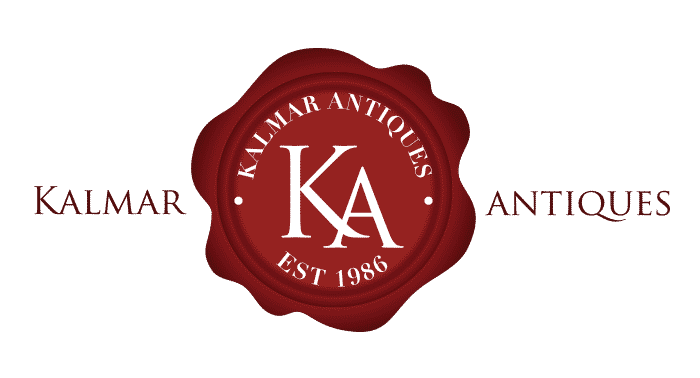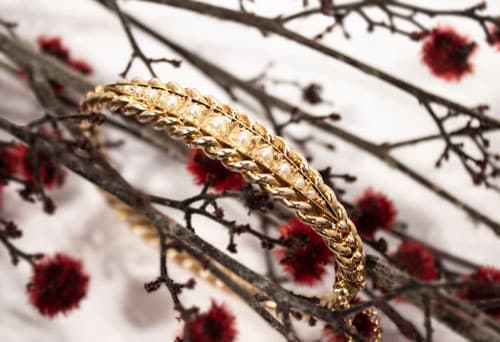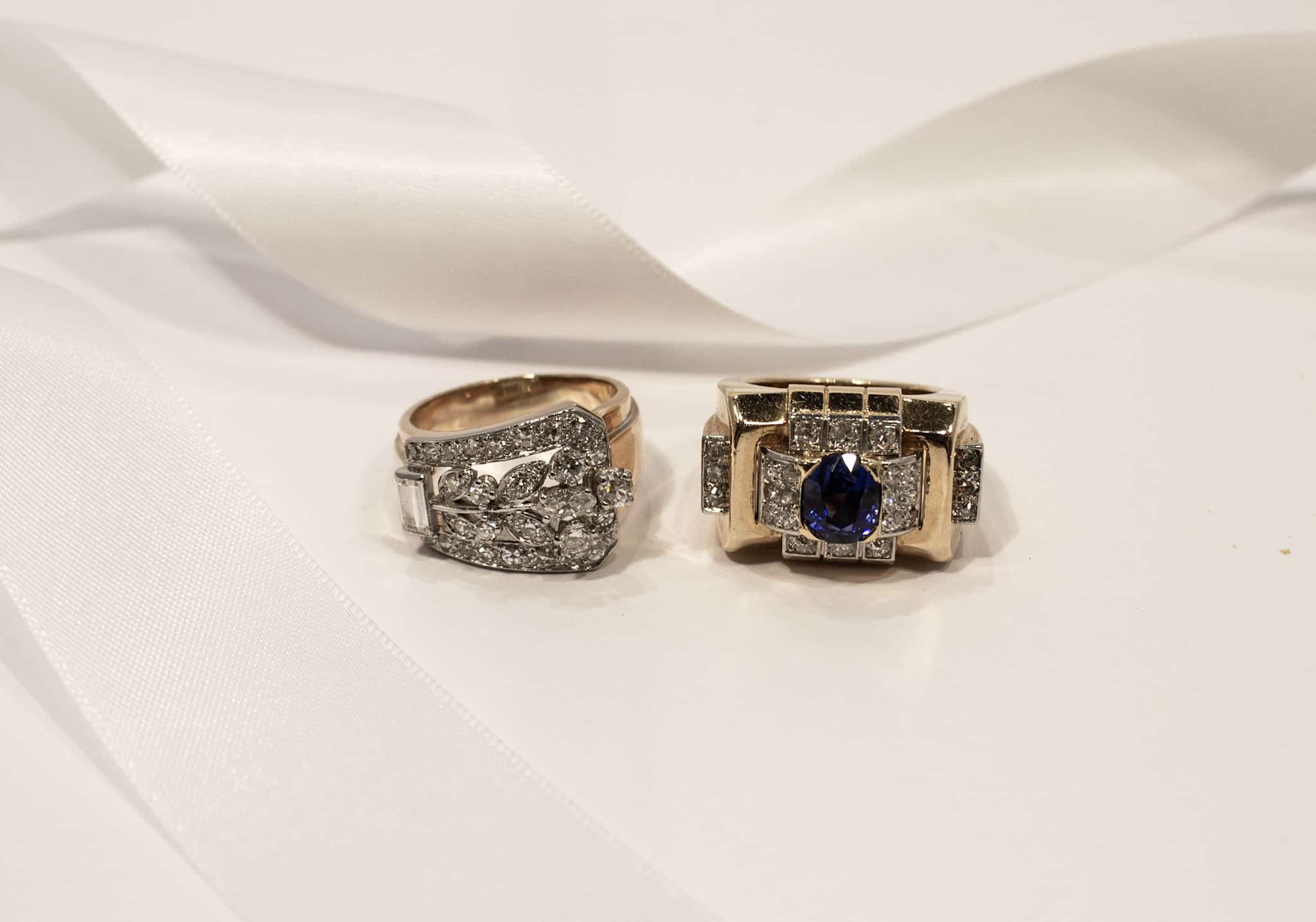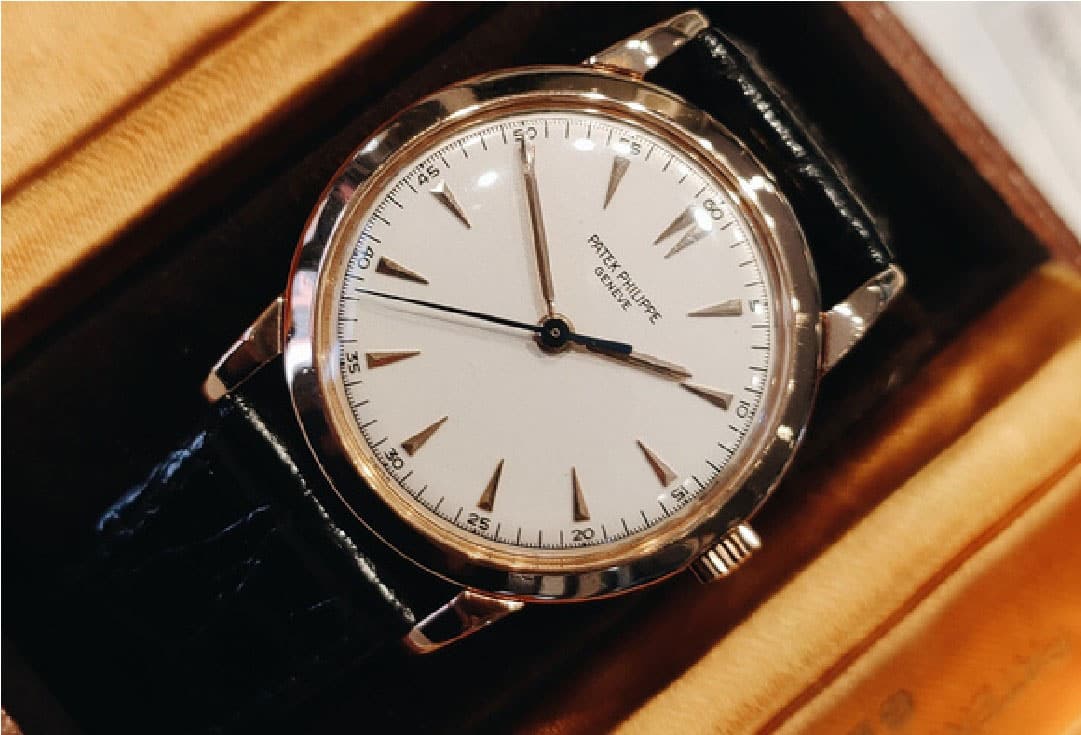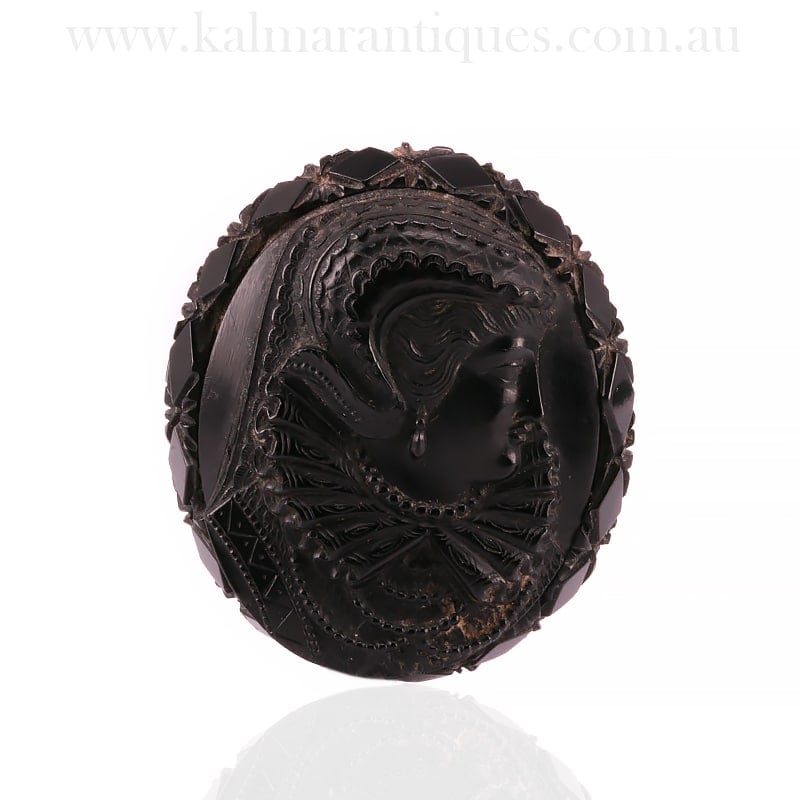
The rule of Mary, Queen of Scots (1542 - 1567) was shrouded in scandal and betrayal which ultimately led to her abdication and subsequent execution. Her rule was documented throughout art history and her portrait is one of the most prolific subjects across portraiture art and jewellery. Mary, Queen of Scots had an affinity for cameos and had a large number in her royal collection. This brooch is a cameo brooch featuring a carved portrait of Mary Queen of Scots made from jet.
Cameos in Antiquity:
Cameos are one of the oldest forms of jewellery and originated during ancient times. Cameos date back to ancient civilisations including Rome, Greece and Egypt. "Cameo artistry travelled between the ancient Mediterranean cultures through trade routes connecting Egypt, Greece, and Rome, and often depicted mythological themes while paying tribute to their respective gods and goddesses" (Cooper 2020). The inspiration for cameo artwork derived from petroglyphs on rock faces which reflected the societal and religious beliefs of the civilisation. Early cameos often depicted religious figures or scenes from Greco-Roman mythology. As the Roman Empire expanded, the subjects depicted in cameo art began to include portraits of important political figures.
Portraiture Art of Mary Queen of Scots:
These themes were perpetuated throughout the Renaissance era due to the movement of classicism which valued a return to antiquity across art and design. Royals wanted to be viewed with the same esteem as the great heads of state from the Greco-Roman Empires and therefore having their own portraits carved into cameos became a popular fashion. "While cameo traditions continued to persist in western culture, the Renaissance and neighboring Elizabethan period were both instrumental in fostering continued innovations in the art of cameo carving as elite women began to collect cameos as signs of cultural status" (Cooper 2020). Mary Queen of Scots had a particular affinity for portraiture jewels in all different forms. She famously used jewellery as gifts of personal affection and as political propaganda. "There are many references to miniatures of Mary, Queen of Scots being distributed by the Queen to her scattered supporters at this period, demonstrating the way in which this new portable art-form could be deployed effectively to cement political as well as personal affiliations" (Royal Trust Collections 2023).

The rule of Mary, Queen of Scots was met with tension from her countrymen as she remained devout to her Roman Catholic faith, in what had become a largely Protestant Scotland. However, it would be the tumultuous relationship with her cousin Elizabeth I that would ultimately lead to her demise. Mary's rule was embroiled with rumours of an adulterous affair and accusations of her involvement in the murder of her second husband, Henry Stewart. These rumours would tarnish the Queen's reputation, but it would be a conspiracy of her involvement in a plot to murder her cousin Elizabeth I, that would ultimately lead to her abdication, exile and execution. "A romantic and tragic figure to her supporters, a scheming adulteress if not murderess to her political enemies, Mary aroused furious controversy in her own lifetime, during which her cousin Queen Elizabeth aptly termed her 'the daughter of debate'"(Fraser 2023). The distribution of the Queen's cameos and portrait jewels would be a way for her to thank her political allies and many of them would have worn these jewels at the royal court as a show of support.
The Cameo Craze of the Victorian Era:
Although the fashion for political cameos found fertile ground in the Renaissance, this particular cameo brooch was made well after the time of Mary, Queen of Scots, in the Victorian era. It was throughout the rule of Queen Victoria that a craze for cameos developed but with a focus on important British figures. "These cameo portraits were essentially wearable miniature sculptures, individualized art objects that showcased recognizably British profiles delicately carved into a classical medium" (Miskin 2016). These jewels were not only aesthetically fashionable but were underpinned by a sense of nationalism. "British portraits replaced classical subjects and Queen Victoria encouraged the further distribution of her image on various cameo objects, in some ways, the 'ancient cameo' became an emblem of Victorian Britishness" (Miskin 2016).
This brooch is carved in jet from the famous Whitby region in England. The image of Mary, Queen of Scots would represent a powerful figure of the British Empire. During this time jet was used extensively in mourning jewellery due to its black colour and low lustre. It is possible that jet was chosen due to the material's strong ties to memorial jewellery. However, jet was used for cameo carvings centuries prior to its association with mourning and therefore could have been selected due to its abundance and ability to be easily carved.
This brooch gives insight into the longevity which the fashion for cameos has endured throughout history, from antiquity to the Victorian era. It represents the image of Mary, Queen of Scots, a contentious figure throughout British history. The brooch also serves as object history in tracing the rise of nationalism, in particular of female monarchs, throughout the Victorian era.
Sources:
Cooper, M 2020, 'A brief history of cameo jewelry', My Modern MET; A Brief History of Cameo Jewelry and How It's Still Popular Today (mymodernmet.com)
Royal Trust Collections 2023, 'Mary, Queen of Scots', Blog Post. Accessed 10 January 2024; Nicholas Hilliard (1547-1619) - Mary, Queen of Scots (1542-1587) (rct.uk)
Fraser, Antonia 2023, 'Mary, Queen of Scotland', Britannica Encyclopaedia; Mary | Biography & Facts | Britannica
Miskin, Lauren 2016, 'The Victorian “cameo craze”: cameos, femininity, and the fashioning of Britain’s imperial identity', Victorian Review. Vol. 42, No 1: Spring 2016, pp 167-184.
